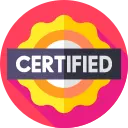FREE
daily Instructor: Dr. Candice JacobsonCourse Overview
Vehicle Assessment and Documentation
Initial Vehicle Condition Analysis
- Identifying the original factory condition of a vintage vehicle.
- Recognizing and documenting prior repairs, modifications, and non-original components.
- Assessing the overall structural integrity and component wear.
Historical Research and Authenticity
- Sourcing accurate period-specific details, specifications, and design elements.
- Understanding original material compositions, color codes, and component variations.
- Verifying the historical accuracy of a vehicle to ensure authentic restoration.
Comprehensive Documentation and Project Planning
- Creating detailed photographic records of every component and assembly step.
- Developing accurate schematics and diagrams for wiring, plumbing, and mechanical systems.
- Implementing meticulous labeling and inventory systems for all removed parts.
Parts Identification and Sourcing
- Methods for identifying original vintage vehicle parts versus reproduction components.
- Strategies for locating rare, obsolete, or specialized vintage components.
- Evaluating the quality and suitability of replacement parts for authentic restoration.
Disassembly and Part Management
Systematic Disassembly Procedures
- Step-by-step methods for the careful and organized removal of vehicle components.
- Techniques to minimize damage to original fasteners and delicate parts during disassembly.
- Ensuring proper sequencing for reassembly and preventing component loss.
Specialized Tool Usage for Vintage Vehicles
- Proper application of a wide range of hand tools, power tools, and specialty tools specific to vintage vehicle mechanics.
- Understanding the correct use of impact wrenches, torque wrenches, pullers, and presses to avoid damage.
Parts Categorization and Storage
- Implementing advanced systems for categorizing, labeling, and securely storing all removed components.
- Techniques to prevent rust, corrosion, and damage to parts during storage.
- Maintaining a detailed inventory log for every part, noting its condition and location.
Fastener Management and Preservation
- Identification and preservation of original fasteners, including correct removal and reinstallation techniques.
- Understanding various thread types, pitches, and material compositions common in vintage vehicles.
- Methods for cleaning, repairing, and reconditioning original fasteners for reuse.
Bodywork and Metal Fabrication
Panel Repair and Shaping Techniques
- Mastering techniques for precise dent removal, including PDR methods and body hammer and dolly work.
- Advanced methods for shrinking, stretching, and reshaping metal panels without the use of excessive body fillers.
- Techniques for lead loading for seamless panel joining and filling, understanding its benefits and application.
Metal Fabrication and Section Replacement
- Creating and forming new metal sections, including patch panels, floor pans, and structural components.
- Utilizing tools such as English wheels, bead rollers, and power hammers for complex panel shaping.
- Techniques for accurate panel alignment and gap setting to factory specifications.
Welding Processes for Automotive Sheet Metal
- Expert application of MIG, TIG, and oxy-acetylene welding processes for different types and thicknesses of sheet metal.
- Techniques for minimizing heat distortion and warpage during welding.
- Proper weld preparation, execution, and finishing for strength and aesthetics.
Chassis Straightening and Alignment
- Assessing and diagnosing bent or damaged chassis and frame components.
- Techniques for precise frame straightening using specialized equipment.
- Ensuring structural integrity and correct vehicle geometry post-repair.
Corrosion Management and Surface Preparation
Rust Identification and Treatment
- Differentiating between various types of corrosion, including surface rust, deep pitting, and structural rust.
- Application of chemical treatments for rust conversion and removal.
- Mechanical methods for effective rust removal from various metal surfaces.
Rust Prevention and Protective Coatings
- Application of appropriate primers, epoxy sealers, and protective coatings to bare metal surfaces.
- Understanding the properties of different anti-corrosion materials and their long-term effectiveness.
- Techniques for sealing seams and cavities to prevent future moisture ingress.
Abrasive Blasting and Media Selection
- Safe and effective use of various abrasive media (e.g., sand, soda, glass bead, plastic bead) for surface stripping.
- Understanding the impact of different media on various materials and surface profiles.
- Controlling blasting pressure and nozzle distance for optimal results and preventing damage.
Surface Profiling and Adhesion Promotion
- Achieving the correct surface profile for optimal primer and paint adhesion.
- Methods for measuring and verifying surface roughness and cleanliness.
- Techniques for final surface preparation, including degreasing and tack wiping.
Paint and Finish Application
Paint System Understanding and Selection
- Detailed knowledge of various vintage and modern paint systems, including lacquers, enamels, urethanes, and water-borne paints.
- Understanding the chemical composition and compatibility of different paint layers (primers, base coats, clear coats).
Advanced Color Matching Techniques
- Utilizing spectral analysis and color chips for accurate color matching to original factory finishes.
- Techniques for blending new paint into existing finishes for seamless repairs.
- Understanding metamerism and its effect on color perception under different lighting.
Spray Gun Setup and Application Mastery
- Mastering the setup and adjustment of various spray guns for different paint types and applications.
- Techniques for controlling air pressure, fluid flow, and fan pattern for flawless finishes.
- Achieving consistent film thickness, smooth flow-out, and minimal overspray or runs.
Wet Sanding and Polishing for Show Quality
- Multi-stage wet sanding processes for removing imperfections, orange peel, and dust nibs from paint surfaces.
- Utilizing various polishing compounds and pads to achieve deep gloss and a mirror-like finish.
- Techniques for maintaining the integrity of the paint layer during correction processes.
Clear Coat Application and Characteristics
- Proper techniques for applying clear coats for enhanced durability, UV protection, and depth.
- Understanding different clear coat types, including high-solids, medium-solids, and ceramic clears, and their characteristics.
- Achieving a consistent, smooth clear coat finish ready for final polishing.
Chassis and Suspension Restoration
Suspension Component Rebuilding
- Disassembly, inspection, and meticulous reassembly of leaf springs, coil springs, shock absorbers, and control arms.
- Techniques for replacing worn bushings, bearings, and ball joints in suspension components.
- Ensuring proper spring rates and damping characteristics for period-correct ride quality.
Steering System Overhaul and Alignment
- Restoration of steering boxes, rack and pinion systems, tie rods, and steering linkages.
- Techniques for adjusting steering play and ensuring precise steering response.
- Understanding and performing wheel alignment procedures for vintage vehicles.
Brake System Restoration and Modernization
- Comprehensive rebuilding of drum and disc brake systems, including master cylinders, wheel cylinders, and calipers.
- Restoring or replacing brake lines, hoses, and proportioning valves.
- Understanding options for discreetly upgrading vintage brake systems for enhanced safety while maintaining original appearance.
Wheel and Tire Restoration
- Techniques for refinishing and restoring original steel and alloy wheels, including powder coating and painting.
- Assessing tire date codes, wear patterns, and authenticity for period-correct tires.
- Proper mounting and balancing techniques for vintage wheel and tire combinations.
Bushings, Bearings, and Fastener Installation
- Proper selection and installation of correct material bushings and bearings for all chassis components.
- Understanding torque specifications and proper lubrication for all suspension and steering fasteners.
Engine and Drivetrain Rebuilding
Engine Disassembly and Inspection
- Thorough examination of all engine components, identifying wear patterns, cracks, scoring, and other damage.
- Precision measurement of critical engine tolerances using micrometers, bore gauges, and plastigage.
Machining Specifications and Processes
- Understanding critical engine machining processes: cylinder boring and honing, crankshaft grinding, camshaft bearing installation, and valve seat cutting.
- Interpreting machining specifications and ensuring correct clearances for all moving parts.
Component Sourcing and Compatibility
- Selecting correct pistons, rings, bearings, camshafts, and valves for specific vintage engine applications.
- Ensuring proper fitment and compatibility of all internal engine components for optimal performance and longevity.
Fuel System Restoration
- Comprehensive rebuilding of vintage carburetors, fuel pumps, and fuel lines.
- Addressing issues related to modern fuel formulations (e.g., ethanol) and vapor lock in vintage systems.
- Techniques for cleaning and sealing fuel tanks to prevent future contamination.
Cooling System Overhaul
- Restoring radiators, water pumps, thermostats, and hoses to ensure efficient engine cooling.
- Techniques for flushing cooling systems and preventing corrosion.
- Understanding proper coolant types for vintage engine materials.
Transmission and Differential Rebuilding
- Disassembly, inspection, and reassembly of manual and automatic transmissions.
- Techniques for replacing gears, bearings, seals, and synchronizers in vintage transmissions.
- Overhauling rear differentials, including setting backlash and pinion depth.
Electrical Systems and Wiring
Wiring Harness Restoration and Fabrication
- Techniques for repairing original wiring harnesses, addressing brittle insulation and corrosion.
- Methods for fabricating new wiring harnesses using period-correct wire types, gauges, and insulation colors.
Component Testing and Repair
- Diagnosing and repairing vintage electrical components: generators, alternators, starter motors, voltage regulators, and relays.
- Testing and reconditioning vintage switches, solenoids, and circuit breakers.
Lighting System Restoration
- Restoring headlights, taillights, turn signals, and interior lighting to original brightness and function.
- Techniques for repairing and polishing vintage lens covers and reflectors.
Instrumentation and Gauge Repair
- Calibrating and repairing vintage gauges, speedometers, tachometers, oil pressure, and temperature gauges.
- Restoring original functionality and appearance to vintage clocks and warning lights.
Electrical Diagram Interpretation
- Expertly reading and understanding complex vintage vehicle wiring diagrams and schematics.
- Advanced troubleshooting techniques for identifying and resolving electrical faults.
Upholstery and Interior Restoration
Seat Frame Repair and Reinforcement
- Repairing and reinforcing original seat frames, addressing rust, broken springs, and structural weaknesses.
- Techniques for ensuring proper seat ergonomics and comfort after restoration.
Spring and Padding Replacement
- Methods for replacing worn springs, saggy foam, horsehair, and cotton batting.
- Techniques for shaping and layering padding to restore original seat contours and support.
Upholstery Material Selection and Sourcing
- Identifying and sourcing period-correct fabrics, leathers, vinyls, and carpets.
- Understanding the durability, feel, and aesthetic properties of various authentic materials.
Sewing and Trimming Techniques
- Mastering industrial sewing machine operation for automotive upholstery applications.
- Precision pattern cutting, panel joining, and accurate trimming techniques for a factory finish.
Headliner and Door Panel Fabrication
- Creating and installing new headliners, door panels, and kick panels with correct fit and finish.
- Techniques for attaching upholstery to panels and frames for a seamless appearance.
Dashboard and Interior Trim Restoration
- Repairing and refinishing dashboards, steering wheels, and interior trim pieces.
- Methods for restoring original woodgraining, chrome, and painted finishes on interior components.
Final Assembly and Detailing
Component Reassembly and Integration
- Systematic reassembly of all restored components, ensuring proper fitment and functional integration.
- Adhering to correct torque specifications and assembly sequences for reliability and safety.
Alignment and Adjustment
- Final alignment and adjustment of all exterior panels: doors, hoods, trunks, and fenders.
- Achieving consistent panel gaps and smooth operation of all closures.
Fluid Filling and System Checks
- Filling all necessary vehicle fluids (engine oil, transmission fluid, coolant, brake fluid, differential oil).
- Performing initial system checks for leaks, proper pressure, and overall function of all major systems.
Exterior Detailing for Concours Finish
- Advanced techniques for cleaning, polishing, and protecting all exterior surfaces.
- Detailing methods for chrome, stainless steel trim, glass, and rubber components.
- Achieving a deep, reflective shine on painted surfaces without introducing swirls or holograms.
Interior Detailing and Finishing Touches
- Thorough cleaning and conditioning of all interior surfaces, including leather, vinyl, fabric, and carpets.
- Reinstallation of interior trim, instrumentation, and accessories with precision.
- Addressing final touches to ensure a pristine and inviting interior environment.
Operational Testing and Final Adjustments
- Performing comprehensive operational tests to ensure all vehicle systems (engine, transmission, brakes, electrical) function correctly and safely.
- Making final adjustments to engine tuning, brake balance, and steering alignment for optimal performance.
FlashCards
External Resources
Add-On Features
Expert Instructor
Get live study sessions from experts
Honorary Certification
Receive a certificate before completing the course.
Currency
Sign in to change your currency
I'm not ready to enroll?
Tell us why, because it matters.
Enroll With a Key
Course Benefits
Get a Job
Use your certificate to stand out and secure new job opportunities.
Earn More
Prove your skills to secure promotions and strengthen your case for higher pay
Learn a Skill
Build knowledge that stays with you and works in real life.
Lead Teams
Use your certificate to earn leadership roles and invitations to industry events.
Visa Support
Use your certificate as proof of skills to support work visa and immigration applications.
Work on Big Projects
Use your certificate to qualify for government projects, enterprise contracts, and tenders requiring formal credentials.
Win Partnerships
Use your certified expertise to attract investors, get grants, and form partnerships.
Join Networks
Use your certificate to qualify for professional associations, advisory boards, and consulting opportunities.
Stand Out Professionally
Share your certificate on LinkedIn, add it to your CV, portfolio, job applications, or professional documents.
Discussion Forum
Join the discussion!
No comments yet. Sign in to share your thoughts and connect with fellow learners.
Frequently Asked Questions
For detailed information about our Vintage Vehicle Restoration Certification course, including what you’ll learn and course objectives, please visit the "About This Course" section on this page.
The course is online, but you can select Networking Events at enrollment to meet people in person. This feature may not always be available.
We don’t have a physical office because the course is fully online. However, we partner with training providers worldwide to offer in-person sessions. You can arrange this by contacting us first and selecting features like Networking Events or Expert Instructors when enrolling.
Contact us to arrange one.
This course is accredited by Govur University, and we also offer accreditation to organizations and businesses through Govur Accreditation. For more information, visit our Accreditation Page.
Dr. Candice Jacobson is the official representative for the Vintage Vehicle Restoration Certification course and is responsible for reviewing and scoring exam submissions. If you'd like guidance from a live instructor, you can select that option during enrollment.
The course doesn't have a fixed duration. It has 24 questions, and each question takes about 5 to 30 minutes to answer. You’ll receive your certificate once you’ve successfully answered most of the questions. Learn more here.
The course is always available, so you can start at any time that works for you!
We partner with various organizations to curate and select the best networking events, webinars, and instructor Q&A sessions throughout the year. You’ll receive more information about these opportunities when you enroll. This feature may not always be available.
You will receive a Certificate of Excellence when you score 75% or higher in the course, showing that you have learned about the course.
An Honorary Certificate allows you to receive a Certificate of Commitment right after enrolling, even if you haven’t finished the course. It’s ideal for busy professionals who need certification quickly but plan to complete the course later.
The price is based on your enrollment duration and selected features. Discounts increase with more days and features. You can also choose from plans for bundled options.
Choose a duration that fits your schedule. You can enroll for up to 180 days at a time.
No, you won't. Once you earn your certificate, you retain access to it and the completed exercises for life, even after your subscription expires. However, to take new exercises, you'll need to re-enroll if your subscription has run out.
To verify a certificate, visit the Verify Certificate page on our website and enter the 12-digit certificate ID. You can then confirm the authenticity of the certificate and review details such as the enrollment date, completed exercises, and their corresponding levels and scores.
Can't find answers to your questions?
Additional Courses
Certification Guide

Complete the Course
Begin the course by selecting your experience level in the course content section:
Beginner: Master the material with interactive questions and enough time.
Intermediate: Get certified faster with hints and balanced questions.
Advanced: Challenge yourself with more questions and less time

Earn Your Certificate
To download and share your certificate, you must achieve a combined score of at least 75% on all questions answered.





